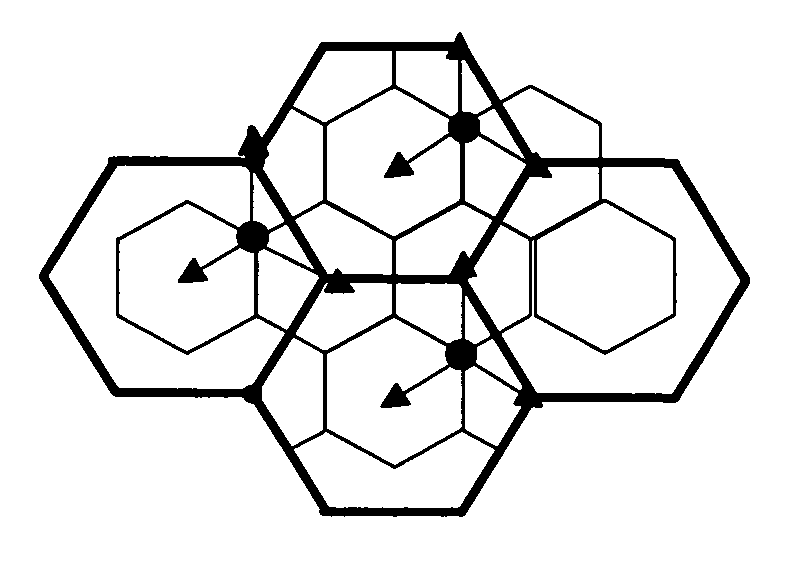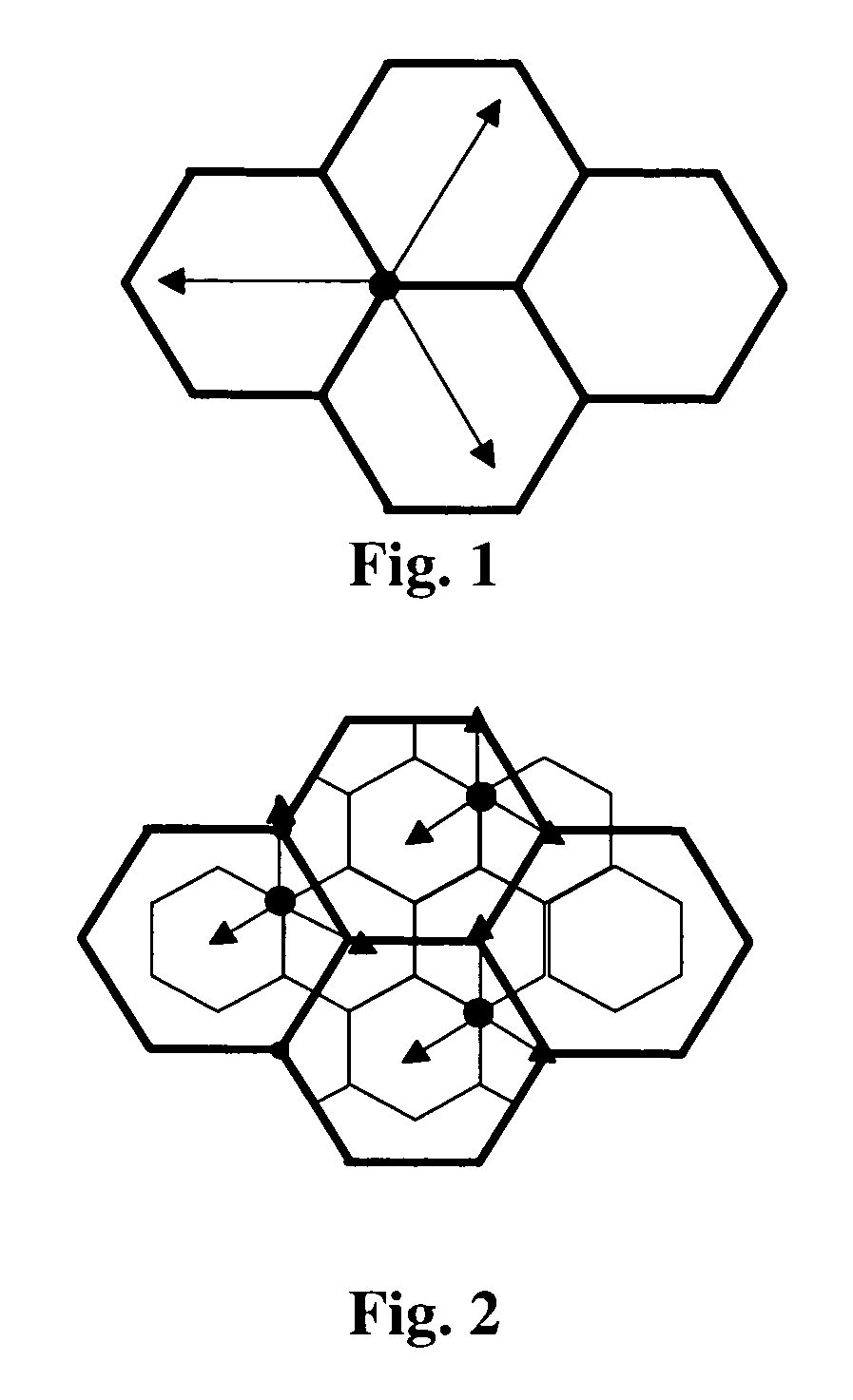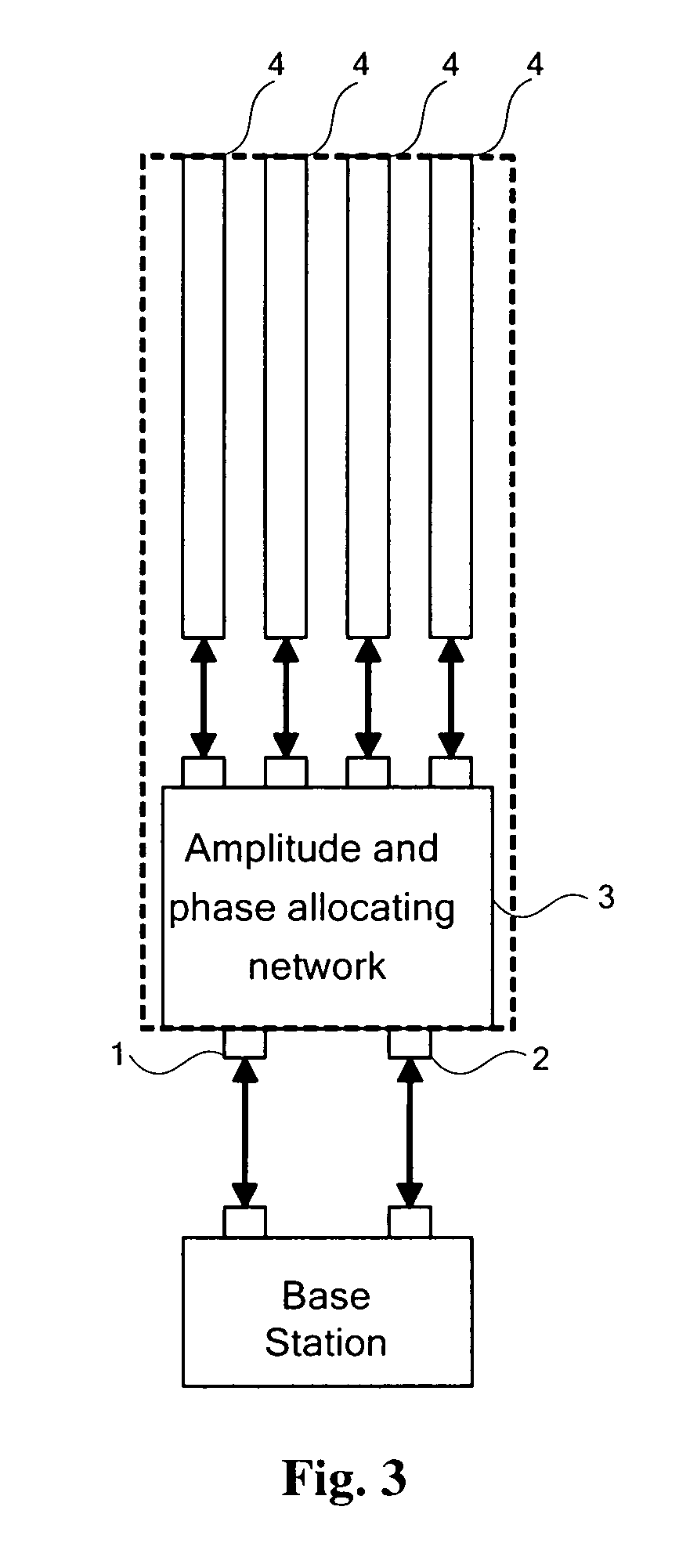Antenna device, wireless cellular network and method of capacity expansion
a wireless cellular network and antenna device technology, applied in the field of mobile communication technologies, can solve the problems of increased costs, reduced capacity density of each base station, and limited capacity of each base station, and achieve the effect of high costs
- Summary
- Abstract
- Description
- Claims
- Application Information
AI Technical Summary
Benefits of technology
Problems solved by technology
Method used
Image
Examples
first embodiment
[0037]FIG. 3 is a structural diagram of an antenna device according to the present invention. The antenna device is connected with a base station through a left contact 1 and a right contact 2. The device further includes an amplitude and phase allocating network 3 for allocating signals from the base station to an array of antennas with designed amplitudes and phases, and a splitting antenna 4 with an array of antennas comprising four columns for transmitting and receiving signals. Signals output from the left contact 1 or the right contact 2 pass the amplitude and phase allocating network 3 to generate four outputs respectively linked with the antennas of the array 4.
[0038] Specifically, a structure of the amplitude and phase allocating network 3 is illustrated in FIG. 4. The amplitude and phase allocating network 3 includes:
[0039] two layer-1 3-decibel 90-degree bridges 51 and 52, each of which halves signals from one input channel to two channels and outputs, signals from the t...
second embodiment
[0060] the allocation of amplitudes and phases by the amplitude and phase allocating network particularly includes the following steps:
[0061] base station signals from the left contact 1 enter the 7.7-decibel coupler 111, power of one output of the coupler is lower than that of the another output of the coupler by 7.7 decibels; one of the outputs of the 7.7-decibel coupler 111 enters the 3-decibel 90-degree bridge 131 and is powered-halved to generate two outputs, one of which lags the other by a phase of 90 degrees, the one of the two outputs enters an antenna array a, and the other of the outputs enters an antenna array d; the other of the outputs of the 7.7-decibel coupler 111 passes the 180-degree phase shifter 121 and is phase delayed by 180 degrees, then enters the 3-decibel 90-degree bridge 132, where it is power-halved to generate two outputs, one of which lags the other by a phase of 90 degrees, the one of the two outputs enters an antenna array c, and the other of the two...
PUM
 Login to View More
Login to View More Abstract
Description
Claims
Application Information
 Login to View More
Login to View More - R&D
- Intellectual Property
- Life Sciences
- Materials
- Tech Scout
- Unparalleled Data Quality
- Higher Quality Content
- 60% Fewer Hallucinations
Browse by: Latest US Patents, China's latest patents, Technical Efficacy Thesaurus, Application Domain, Technology Topic, Popular Technical Reports.
© 2025 PatSnap. All rights reserved.Legal|Privacy policy|Modern Slavery Act Transparency Statement|Sitemap|About US| Contact US: help@patsnap.com



